Gomira Mask Makers of Dinajpur – Skilled Wood Workers
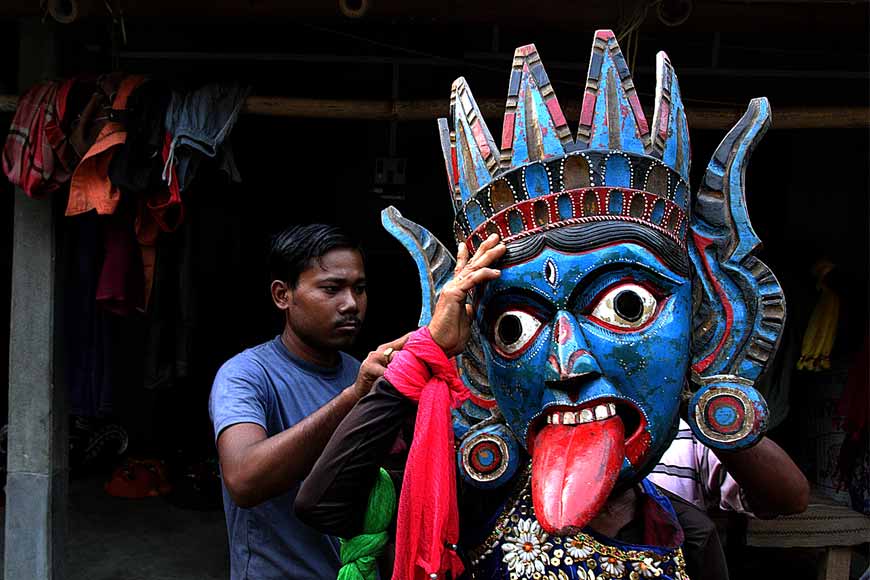
Ratan Das and his 8-year-old son were keenly putting paints on a huge mask that looked like the bearers of Evil. Just beside them lay a big face of a laughing God. We had met these artisans from North Dinajpur a couple of years ago at a crafts fair in Kolkata. Little did we know then that other than well-known Chhau masks, Bengal’s artisans are skilled at making an age-old traditional wooden mask that still is used in festivals of North Bengal, particularly in the districts of Dinajpur.
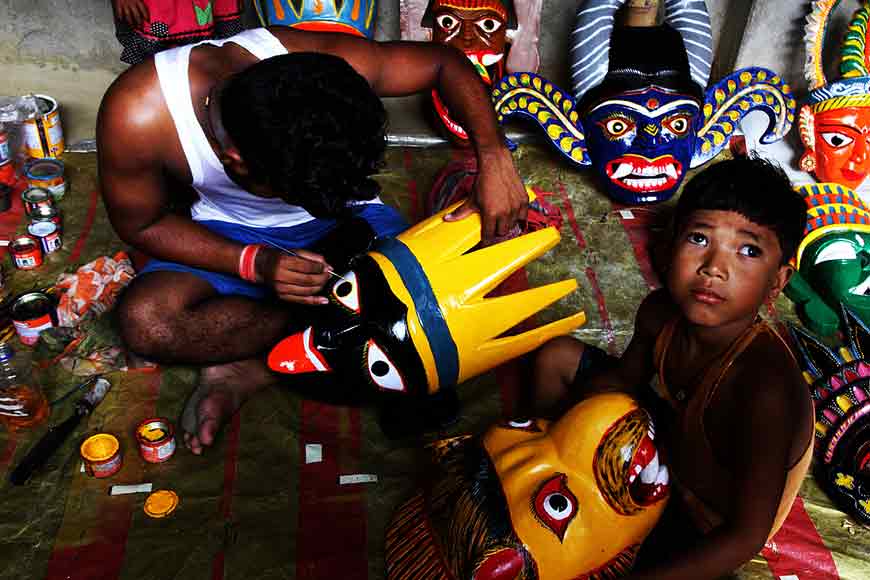
The Gomira masks are very colourful handcrafted masks traditionally made by villagers of North Dinajpur. If one steps into the villages of Mahisbathan is the Kushmandi Block, one comes across around 200 artisans and their families who still hold on to their culture. As Ratan had said: “Gomira masks for us is not just art. It is our devotion to the God and we believe the mask making will bring us luck.” The villagers often pledge these masks to their deities when they want their wish to be fulfilled. What is unusual about these masks, is they are made from fine wood, unlike the Paper Pulp masks of Chhau. The wood-crafted Gomira masks represent the two forms of the divine dance – the Gomira and the RamVanvas.
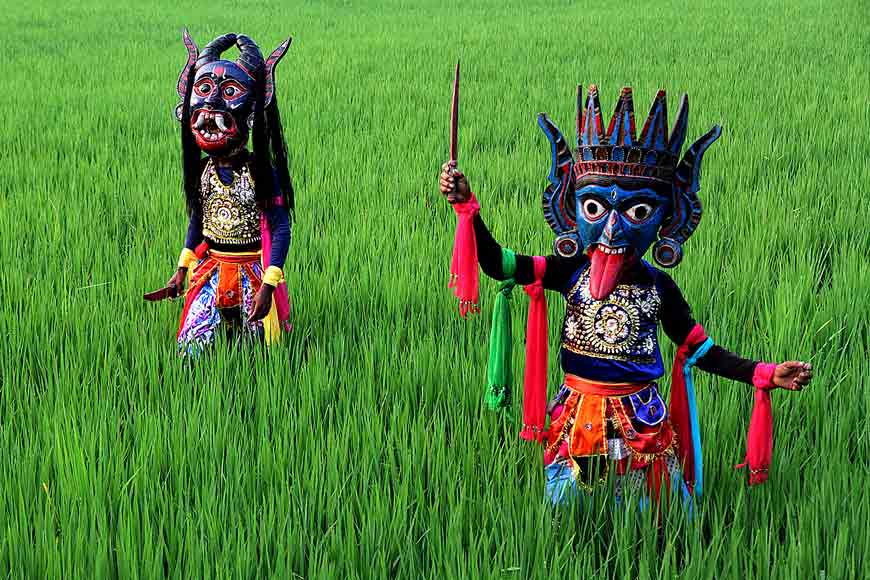
The craft has been kept alive by the state government intervention too. Hon’ble Chief Minister Mamata Banerjee is very keen to preserve these dying art forms of North Bengal, that was largely neglected under the Left rule. The state’s Skill Development Department help the Gomira artisans to sell their masks to the international market and the younger generation of these villages get special educative lessons from skilled workers on how to make these ‘mukha,’ that were usually objects of worship and devotion. Now thanks to the state government, they are sources of income too.
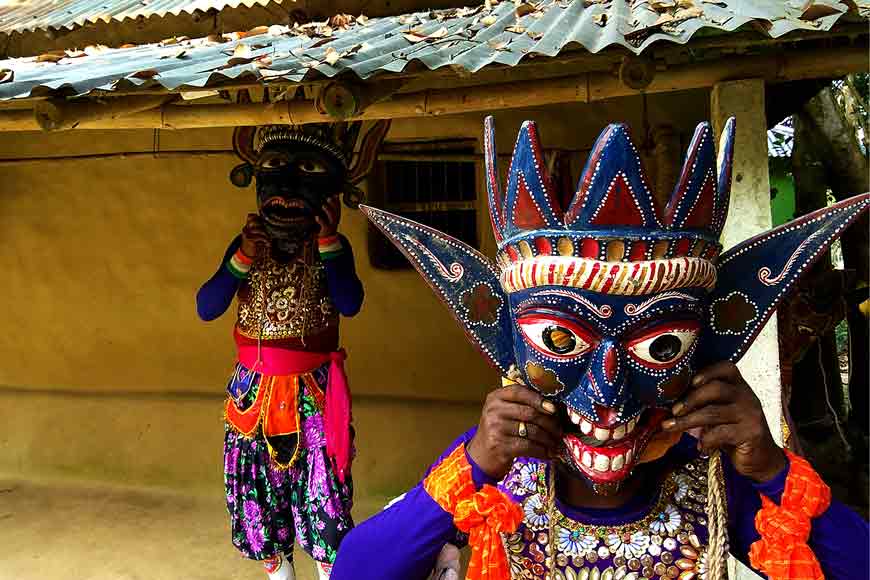
Traditionally, these masks were used in a form of rural dance mainly practiced in the Dinajpur districts. The dance is usually performed by villagers to please the gods to usher in the ‘good forces’ and ward off the ‘evil forces.’ Just like Chhau, it is a masked dance form. Villagers believe the word Gomira has been derived from the colloquial form ‘Gram-Chandi’ or the female deity who protects the village. “Gomira” might have been derived from ‘Gamar’, the wood that is mainly used to make the masks. The Gomira masks or “Mukha” are thus inexorably linked with the Gomira dance festival.
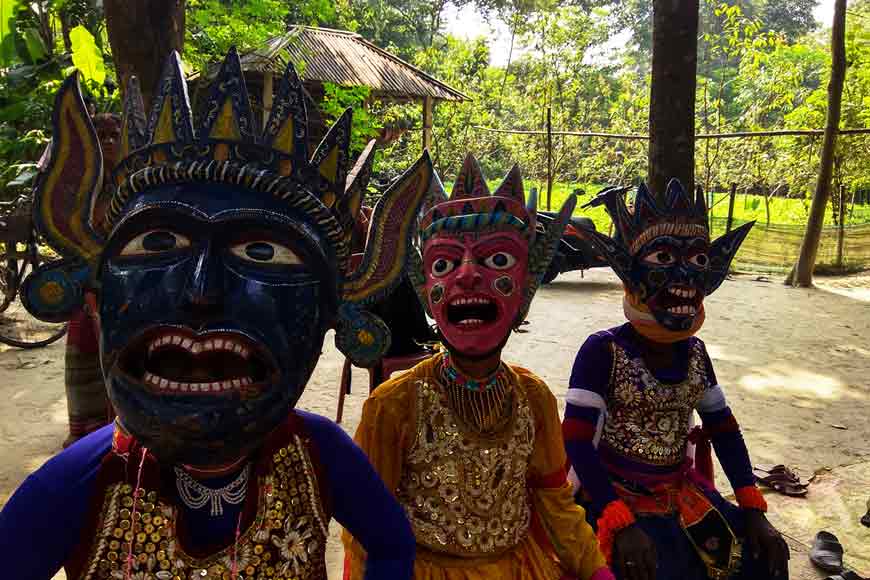
The Gomira mask makers worship Adi-Shakti or the primordial energy. Thus worshipping of the female goddess or the primal power is established.
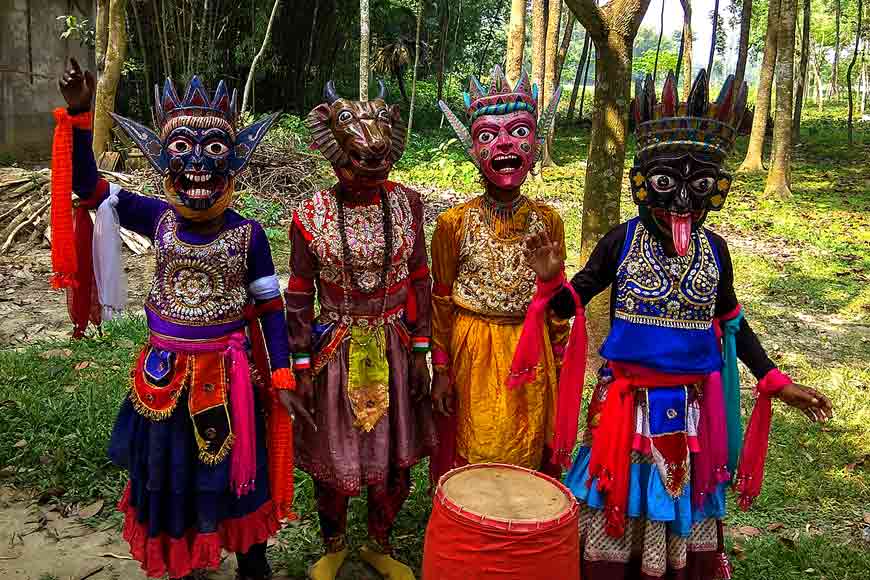
During the months of Baisakh-Jaishtya and Asarh corresponding to the English months between mid-April to mid-July that coincides with the harvest season, Gomira mask makers become busy bees. Several pujas during this time including Amat Kali and Smasan Kali puja of Dinajpur are held during these months and on both occasions, Gomira masks are needed for the dance. The masks are unisexual, are portray male and female characters. The mask makers usually themselves are the dancers, so they are multi-talented. They perform during the festivals to supplement their income.
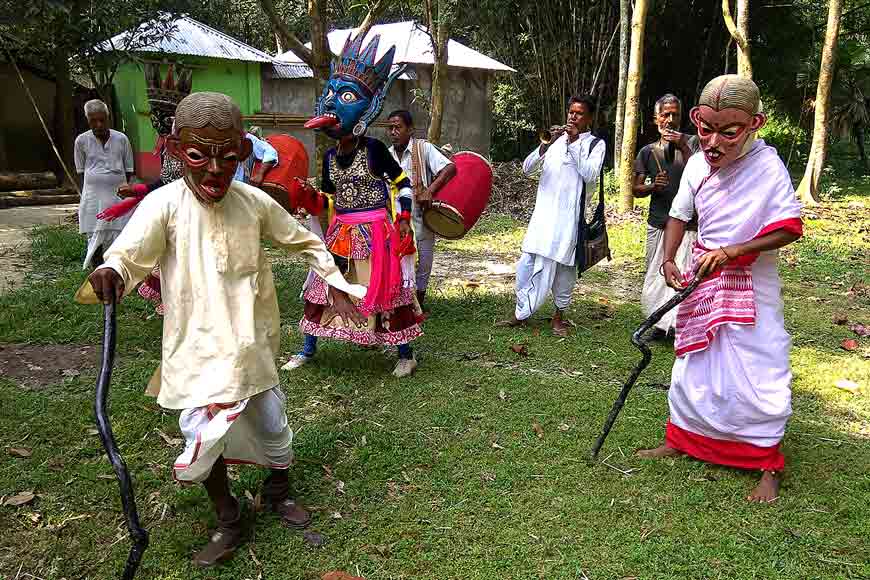
Traditionally, the dance starts with the entry of two characters Buro-Buri, who are actually said to be the human forms of Shiva and Parvati. After their performance, other masked dancers enter and the gods take human shape, to fight the forces of evil and establish a righteous way of life. There are no vocal or oral parts in the dance and hence the beating of the dhaks and Kantar along with the masks primarily depict the story. That’s why the expression on the masks become so important. The dancers who especially put on bigger masks often go into trance supplementing the beliefs of the villagers; they have to be restrained by sprinkling water from the Gomira Ghot. The villagers believe that the deities enter into the dancers during those moments. In fact, it is believed that when any dancer wearing the Narasingha mask is possessed, he can only be calmed by drinking human blood! So nowadays, a dance wearing the Narasingha mask is rarely performed.
Image Courtesy : Nilanjan Ray










